How to snowshoe 101: An expert guide to getting started
- Oops!Something went wrong.Please try again later.
- Oops!Something went wrong.Please try again later.
Content is created by CNN Underscored’s team of editors who work independently from the CNN newsroom. When you buy through links on our site, CNN and its syndication partners may earn a commission. Learn more
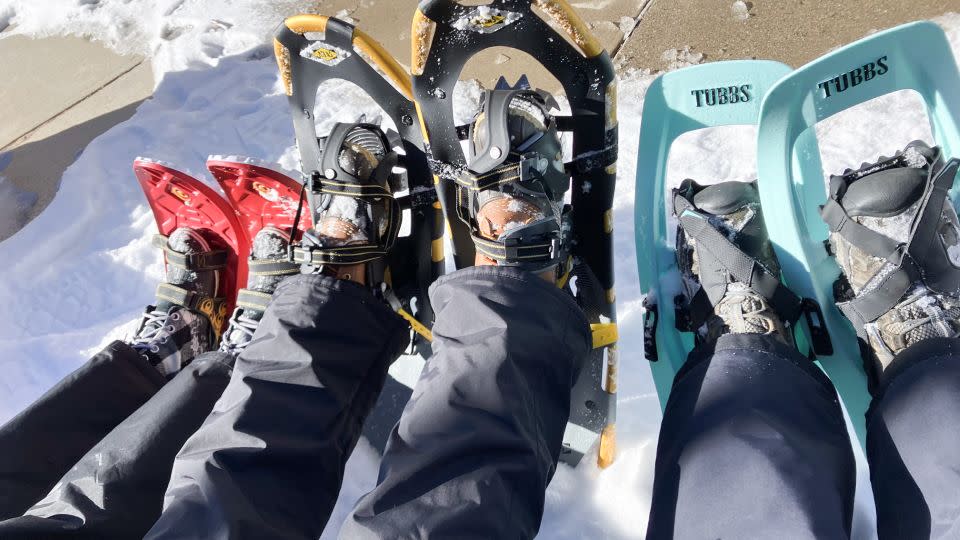
With minimal equipment needed, learning how to snowshoe is accessible, affordable and a relatively easy outdoor sport. “If you can walk, you can snowshoe,” says Jackie Hering, a professional triathlete who serves as director of the US Snowshoe Association and won the women’s 10K race at the 2023 US Snowshoe Championships.
Perhaps that’s why the recreational sport has significantly increased in popularity. A recent study from Snowsports Industries America (SIA), the winter outdoor industry trade association, shows snowshoeing grew from around 3.5 million participants prior to the Covid-19 pandemic to 4.5 million in 2023. And new participant growth is particularly evident among the 25 to 34 age group, which accounted for 27% of all new participants during the ’22 to ’23 winter season.
“Part of this uptick is because snowshoeing is an activity that requires very little upfront cost, and people are taking advantage of the health and mental benefits of participating in outdoor activities,” says Nick Sargent, president of SIA.
How do I snowshoe? Just start walking
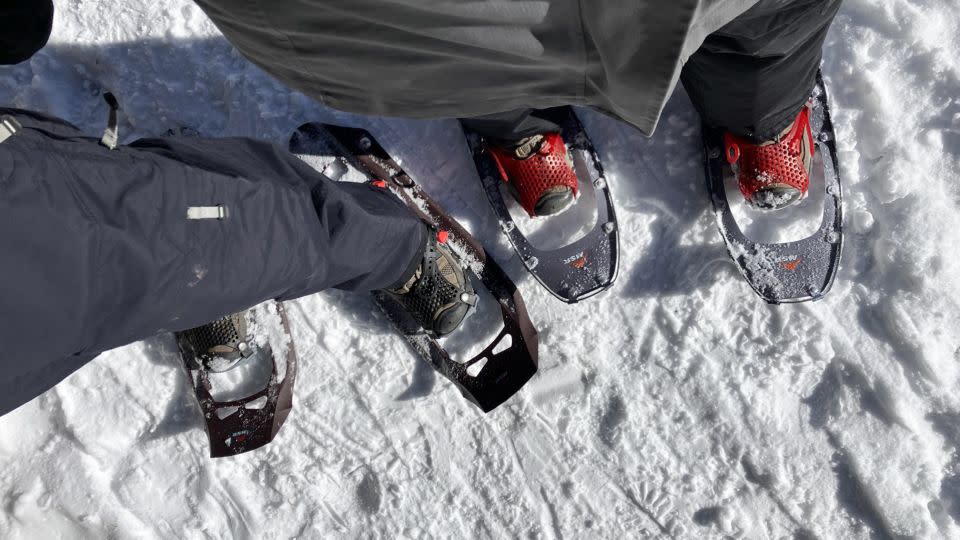
Is snowshoeing hard for beginners? While winter sports such as skiing and snowboarding often include hefty costs for travel, equipment, rentals, clothing and lift tickets (a full-day adult lift ticket can easily run you $100 to $200), snowshoeing is a bargain by comparison.
Basic, entry-level snowshoes and a snow-covered trail are all you need to get started. “You usually don’t need a trail pass or perfect conditions and can head to most any trail you would normally hike or run on,” says Hering.
Kikkan Randall, a five-time Olympian who won gold in the women’s team sprint cross-country skiing event with Jessie Diggins at the 2018 PyeongChang Winter Games, says the best thing about snowshoeing is that anyone can do it. “It’s a great family activity,” says Randall. “I often get out with my parents and my son. We can all go together.”
Joseph Gray, a world champion trail, mountain and snowshoe runner, is a 31-time Team USA national team member and winner of the men’s 10K at the 2023 US National Snowshoe Championships. He says snowshoeing is an excellent option for fun outdoor activities during the snow season. “Skiing sometimes can be an expensive hobby and a little dangerous for young kids, whereas snowshoeing is fairly inexpensive and slow enough to keep the kids in sight,” says Gray.
And there’s plenty more to snowshoeing than cost savings and ease of access. “Snowshoeing offers a combination of beautiful scenery, peace, solitude and fitness,” says Justin Ibarra, director of operations and lead guide at Colorado Adventure Guides, a backcountry outfitter and avalanche education provider operating in Summit County, Colorado (home to Breckenridge, Silverthorne, Keystone and other mountain towns).
While snowshoeing is just walking at the end of the day, Sargent adds that while the sport doesn’t demand specific skills, the activity can be strenuous depending on the terrain. “If you’re a beginner, you may want to stick to flat trails or groomed terrain available at Nordic centers until you become more comfortable in your abilities. Then backcountry or hillier terrain can become an option,” says Sargent.
Where to snowshoe
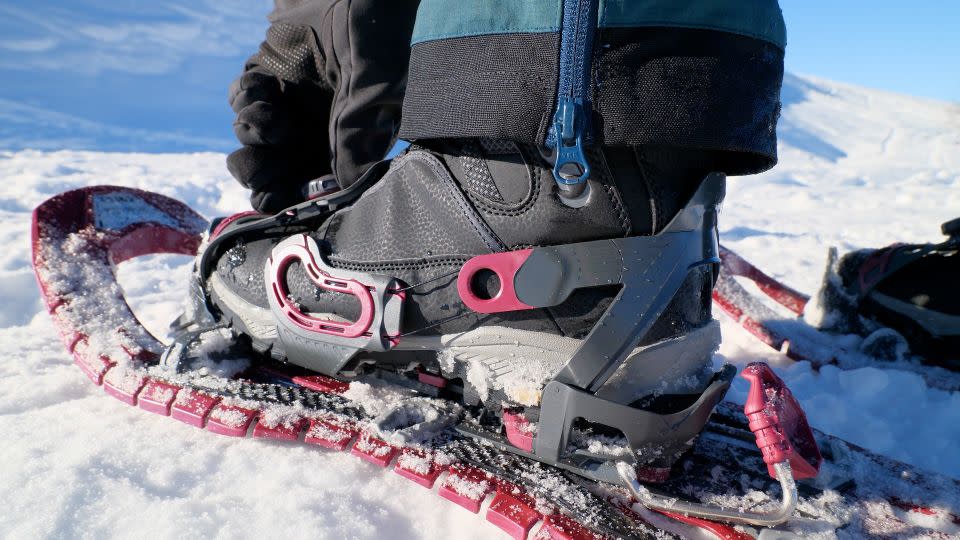
Optimal snowshoeing conditions typically feature about 6 inches of snow. However, snowshoes can handle anywhere from just a few inches on steep slopes to more than a foot of fresh powder, which is easier to navigate than wet, heavy snow. If you tend to snowshoe in consistent conditions, consider investing in specialized equipment for the best experience.
But snowshoeing’s magic lies in its convenience: As long as you have powder, you can head out from virtually anywhere — a local trail, a mountain or even just outside your doorstep. “I love to get out and explore in the woods, especially after a snowfall,” says Randall, who’s based in Anchorage, Alaska. “It’s fun to feel like I’m out adventuring, even within a mile from my house. Accessing places and trails that aren’t always available on skis or bikes is also fun. Snowshoes open up whole worlds of new places to explore.”
Sargent, who lives in the Wasatch Mountain Range in Utah, says he loves exploring his backyard in winter via snowshoes but also appreciates the access snowshoeing gives trekkers to golf courses and trail networks they might not typically think of accessing during the winter months.
However, whether you’re walking around your neighborhood or venturing into the backcountry, being prepared for the terrain and conditions is critical. “It’s important to assess the weather and conditions and the desired level of difficulty for the day with my group when deciding where to go snowshoeing,” says Ibarra.
Choosing the right snowshoes
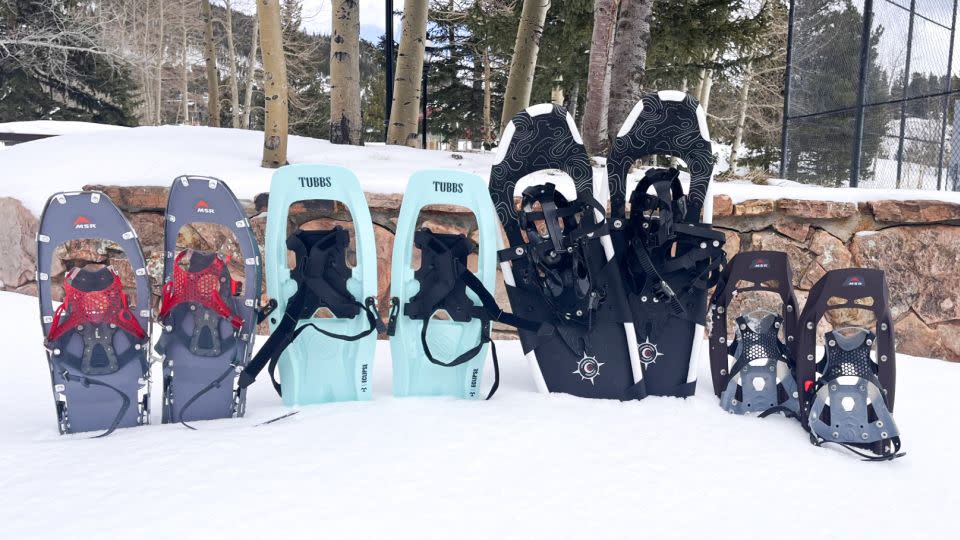
Size, length, bindings and materials are essential considerations in choosing snowshoes, says Ibarra. The ideal size of the snowshoe typically corresponds to the user’s weight, including any gear carried, with larger snowshoes designed to support heavier weights. Size also influences maneuverability: Shorter snowshoes are better for flat, recreational snowshoeing, while longer ones offer better floatation in deep snow.
The construction material, whether aluminum or composite, affects the snowshoes’ durability and weight. If you’re considering using your snowshoes for winter trail running, Hering recommends lighter models specifically made for running.
Snowshoes often include built-in crampons that act as snow or ice cleats to deliver traction. Depending on the model, they may extend along the snowshoe’s side rails or under the toe or heel, especially on snowshoes intended for uneven or mountainous terrain.
According to Sargent, built-in heel lifts are another feature to look for, essential for hilly or mountainous terrain. These adjustable features can elevate the heel by a few inches, reducing calf strain on steep inclines. “Going uphill without a heel lift will make things extremely difficult,” says Sargent.
While most snowshoes provide adequate features for general snow travel, there are specific designs and features for varied terrains. For flat to hilly areas, as well as more challenging or technical conditions, smaller snowshoes “offer increased maneuverability and agility, making them suitable for steep or icy slopes,” says Ibarra. Conversely, if you plan to head off exploring in deeper snow, a slightly longer and wider snowshoe will make it easier to blaze your own trail.
Snowshoes also come with a variety of binding options to keep them strapped to your boots, ranging from simple drawstring and loop straps to more complex ratcheted buckles to step-in webbing to BOA systems that tighten and loosen straps with the turn of a knob.
“The system for snowshoes meant for flat terrain will be simpler since you don’t need anything sophisticated to stay secure,” says Sargent. “For hilly terrain, you’ll find that the system becomes a bit sturdier and moderately more intricate.”
MSR Evo Trail Snowshoes
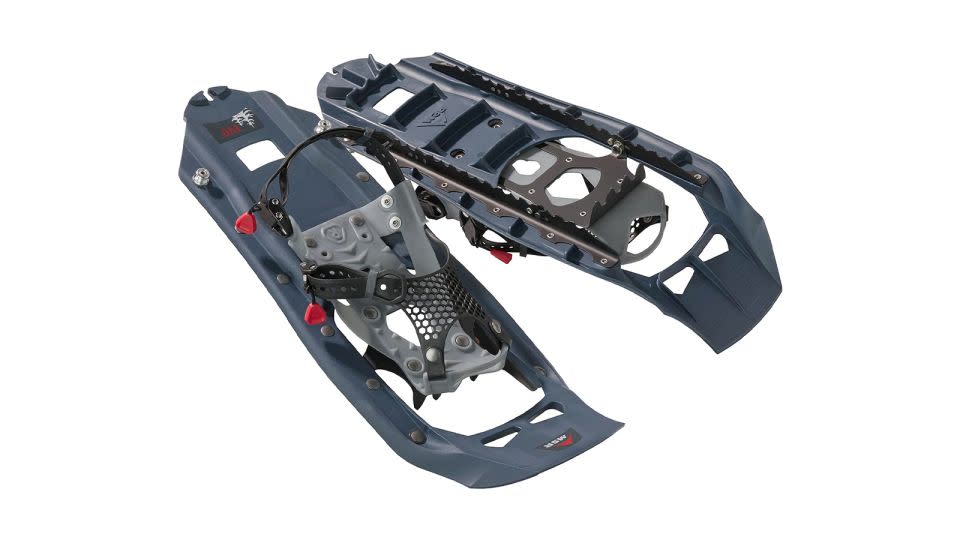
Sargent suggests the Evo Trail for beginners due to their durability, ease and reasonable price. “I have a pair that are still in use that are about eight years old,” says Sargent.
From $167 at Amazon
$170 at REI
$170 at MSR
MSR Lightning Ascent Snowshoes
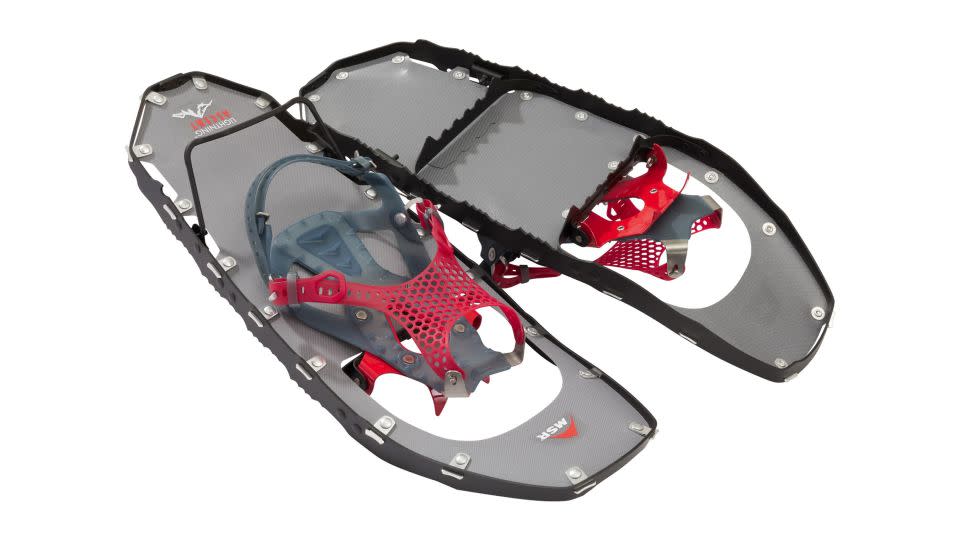
Ultra light and designed for rugged, backcountry terrain, Sargent says this high-performance snowshoe is noted for features like Paragon bindings, steel DTX bindings and a Televator heel lift bar that increases uphill efficiency.
$390 at REI
$390 at MSR
$390 at Amazon
Tubbs Flex VRT Snowshoes
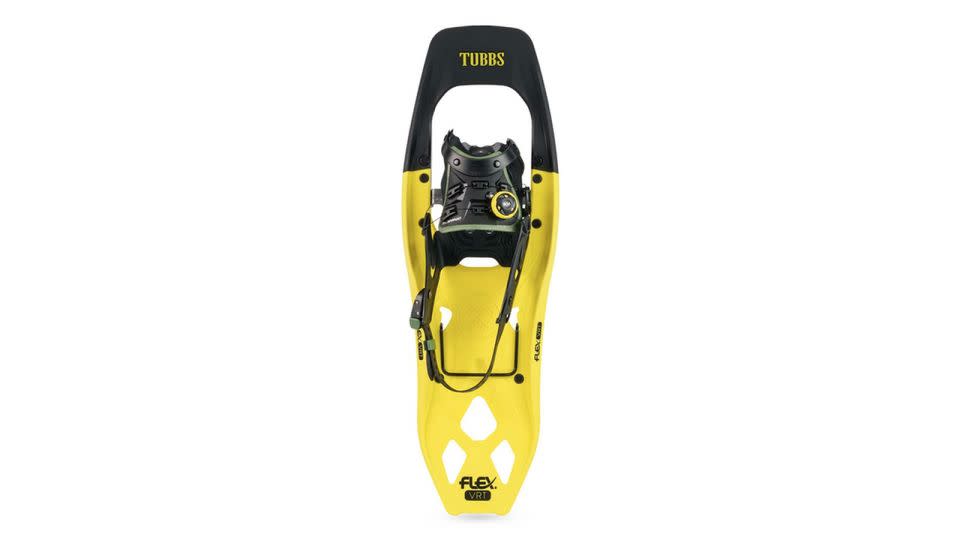
Available in both men’s and women’s sizing, Sargent backs this style for backcountry explorers. He says the BOA binding system, comfortable EVA foam, aggressive crampons and 19-degree heel lift help this snowshoe “become a mountain climbing machine.”
$280 at Tubbs Snowshoes
$280 at Amazon
$280 at Christy Sports
TSL Symbioz Hyperflex Instinct Snowshoes
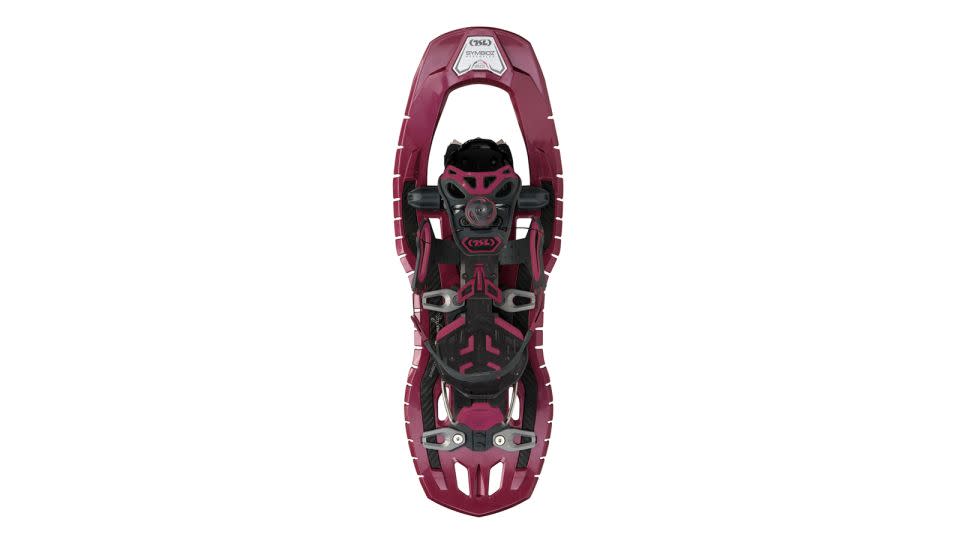
For hikers looking for technical features, grip and comfort, Sargent recommends these hourglass-shaped snowshoes that offer flexible and carbon-reinforced frames and independent claws for icy conditions. “This top-of-the-line snowshoe specializes in providing a natural gait while hiking over any terrain,” says Sargent.
$340 at TSL
From $368 at Amazon
L.L.Bean Women’s Pathfinder BOA Rec Snowshoe Package
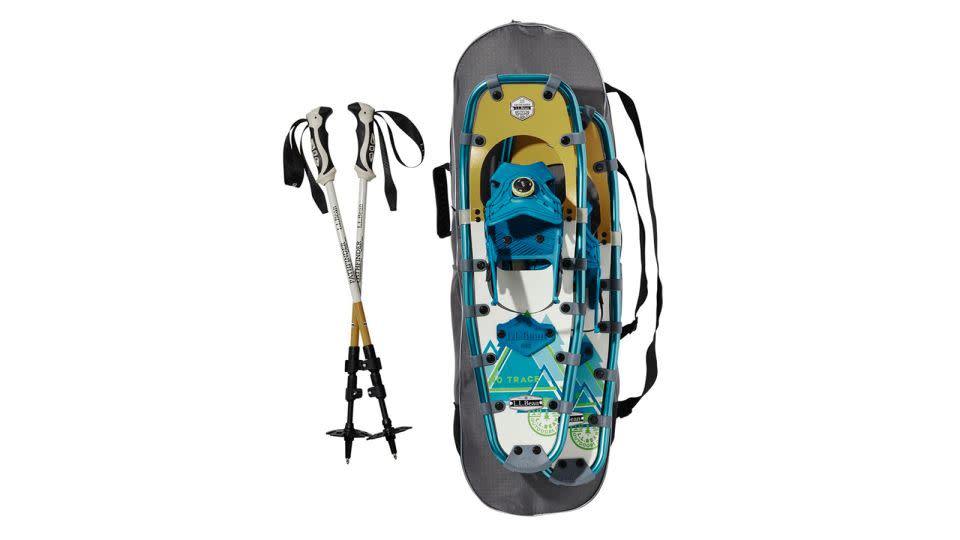
Randall is a fan of the easy-to-use BOA binding system on these aluminum-framed snowshoes. “I like quick and easy bindings, and bonus if you can do it with your gloves or mittens on,” says Randall.
Northern Lites Elite Ultra-Light All-Terrain Unisex Snowshoe
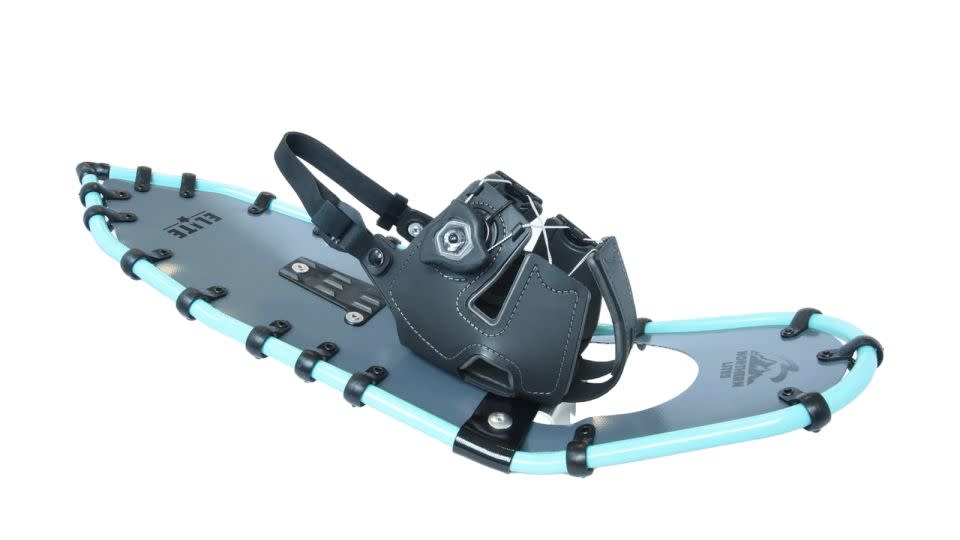
Experts laud these aerospace-grade aluminum snowshoes with rip-proof decking for their speed and lightness on hard-pack snow. Unisex styles start at just 2.2 pounds per pair.
MSR Tyker Kids’ Snowshoes
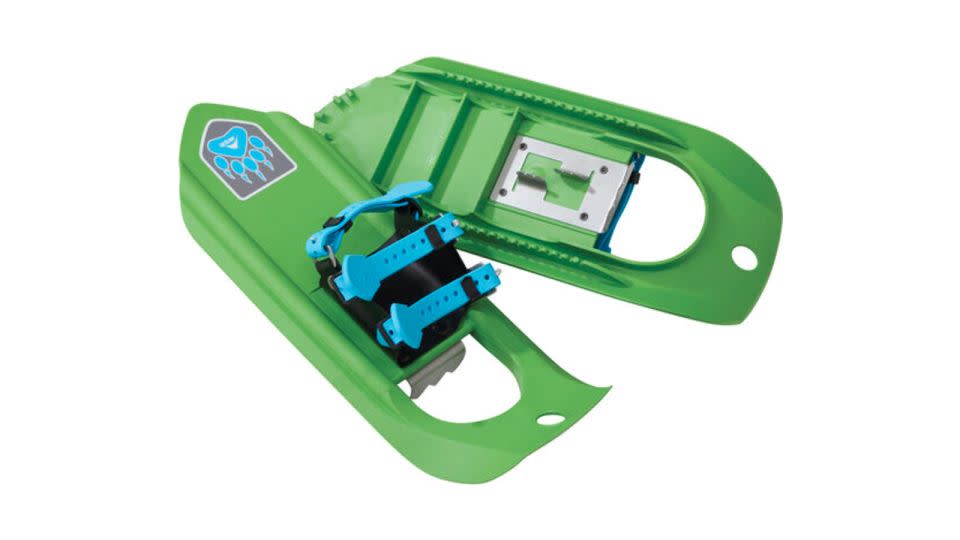
Shopping for the little ones? SIA’s Sargent recommends this style from MSR for its kid-friendly (and mitten-friendly) bindings, flotation and molded traction. “And since they’re designed for children weighing up to 90 pounds, they’ll be able to use them for several years,” says Sargent.
$80 at MSR
$80 at REI
$80 at Amazon
Buying snowshoeing boots
Newcomers to the sport often ask, “Do you wear your own boots when snowshoeing?” Yes, and selecting the proper boots for snowshoeing is crucial for comfort and performance. “If you pick a boot that is too bulky, it can be challenging to fit into the foot harness,” says Randall. “It’s nice to have footwear that has nice structure but is still flexible enough to get good movement with your foot.”
L.L.Bean Snow Boots
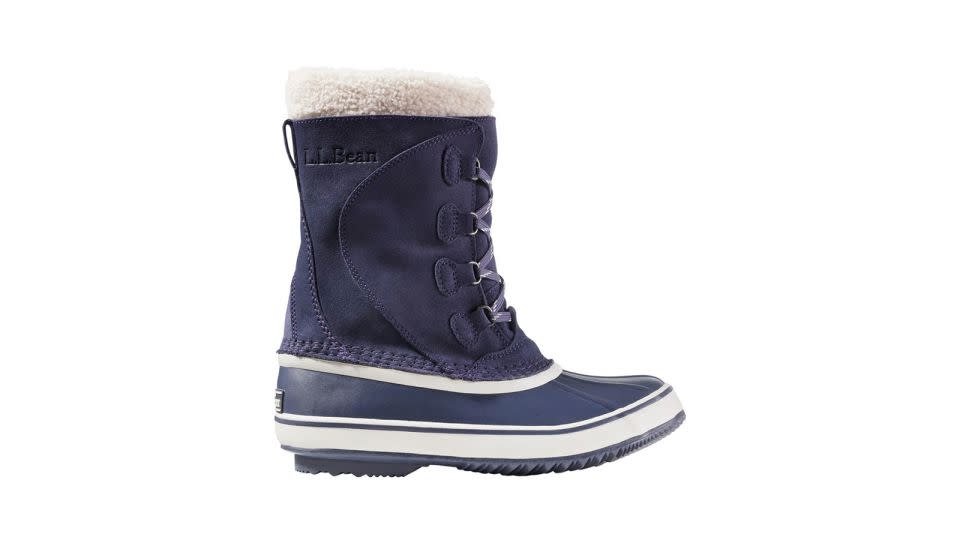
Some of Randall’s favorite boots for snowshoeing, these have a fantastic balance of warmth and adjustability, with removable felt and faux-fleece linings that will help keep you comfortable while snowshoeing on even the coldest days.
Hoka Challenger 7 GTX
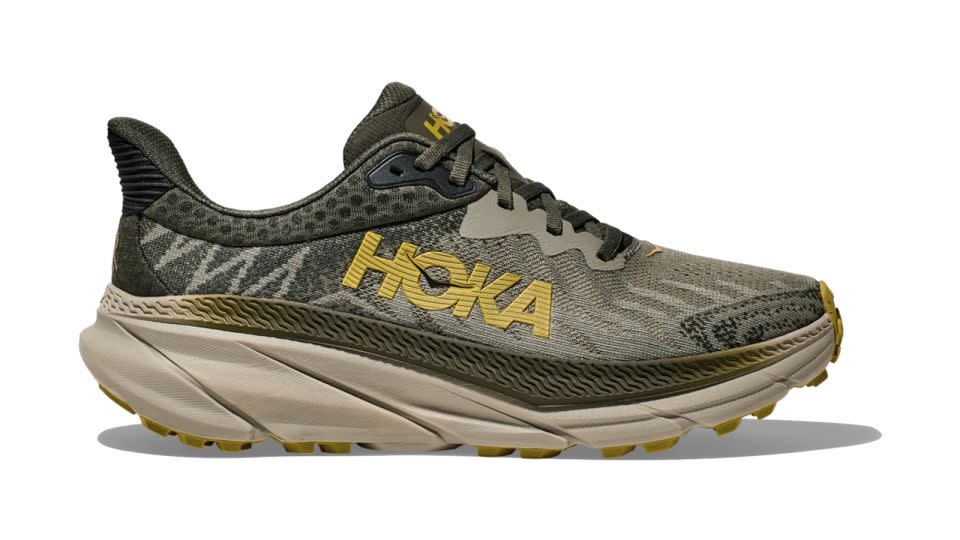
For those who want to try snowshoe running, look for shoes with Gore-Tex or waterproof uppers to protect your feet from getting wet or cold. “This one is light enough for running fast and offers enough protection to also work as a hiking shoe,” says champion runner Joseph Gray.
The North Face Men's Summit Series Breithorn Futurelight Boots
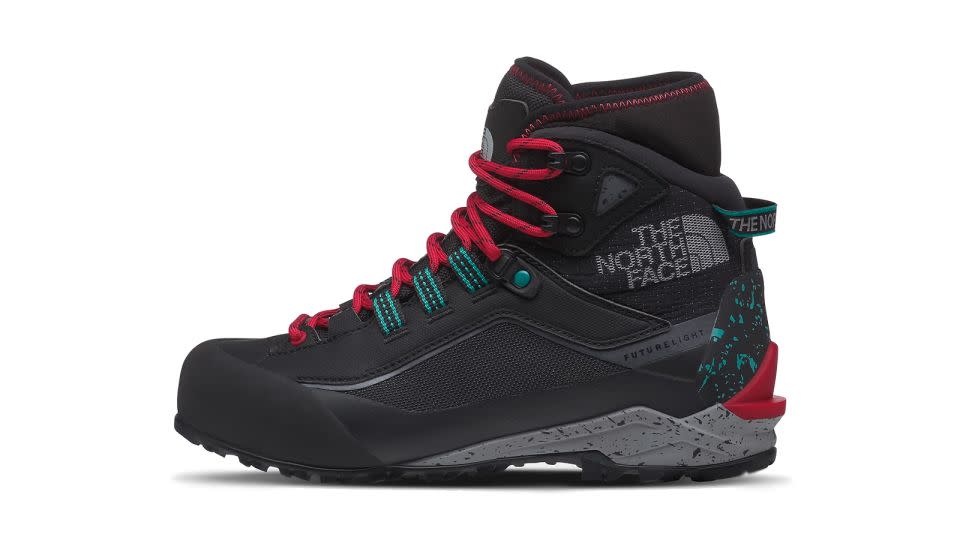
Sargent touts these boots’ breathable waterproof technology. “A breathable boot will help keep you warm and comfortable,” says Sargent.
The North Face Cayesh Futurelight Boots
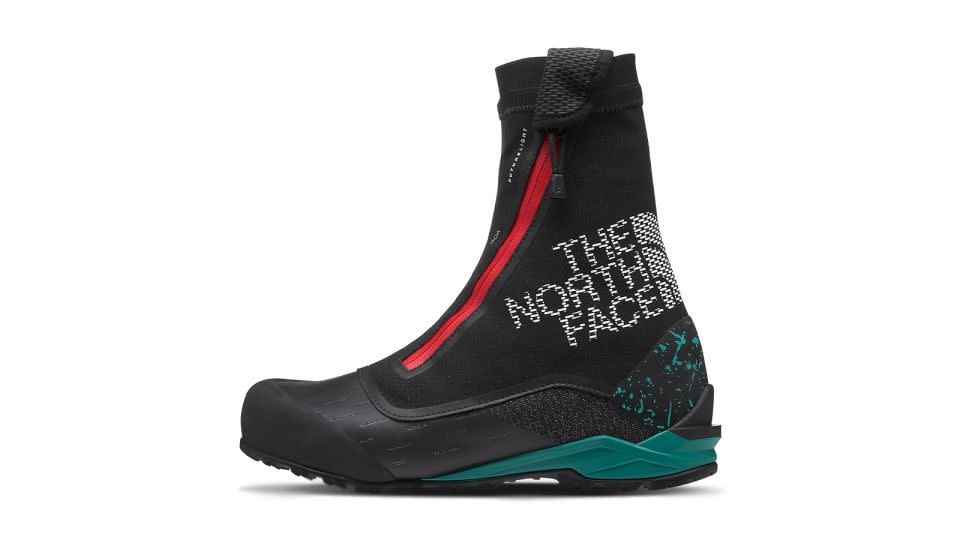
Made for hiking, climbing and trekking in alpine settings, Sargent likes this style as a more technical option for snowshoeing. They include built-in gaiters, a BOA fit system and a durable rubber outsole.
Salewa Men’s Raven 3 Gore-Tex Boots
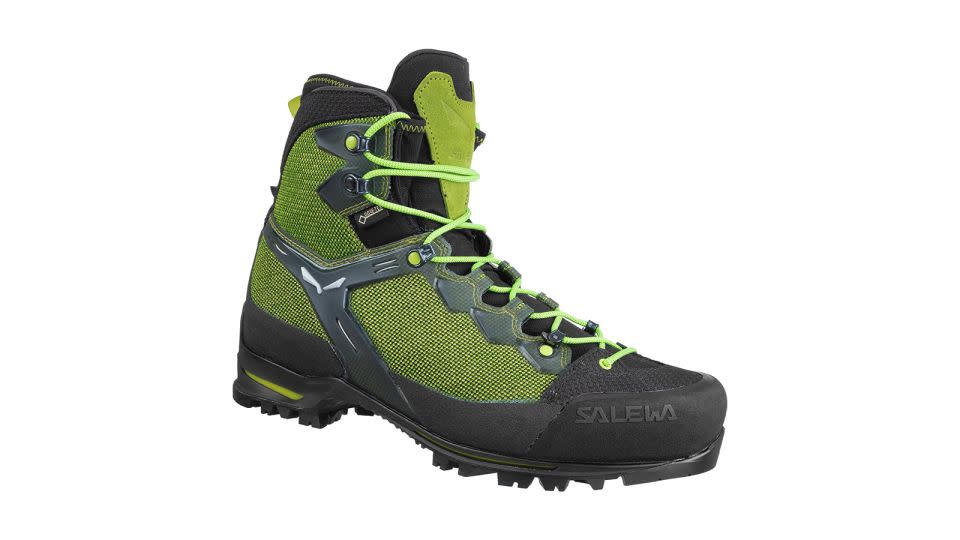
Ibarra likes these lightweight mountaineering boots for challenging terrain and longer trips. “The higher ankles offer better stability and prevent snow from getting inside the boots,” says Ibarra.
Essential snowshoeing gear
You picked out your snowshoes, and you decided on boots. Now it’s time to gear up before you head out in the cold.
Poles
Telescoping poles, which allow you to change their height, are helpful for snowshoers, who may need to make adjustments while out on the trail, depending on snow conditions. Much like trekking poles used in hiking, they provide additional stability, balance and support on uneven and slippery terrain and can enhance your snowshoeing experience, Ibarra adds.
“Snowshoe trekking poles can help reduce strain on the legs and provide leverage when traversing uphill or downhill sections,” says Ibarra. “They are adjustable in length and typically feature a wider basket at the bottom to prevent the poles from sinking too deep into the snow.”
Black Diamond Expedition 3 Poles
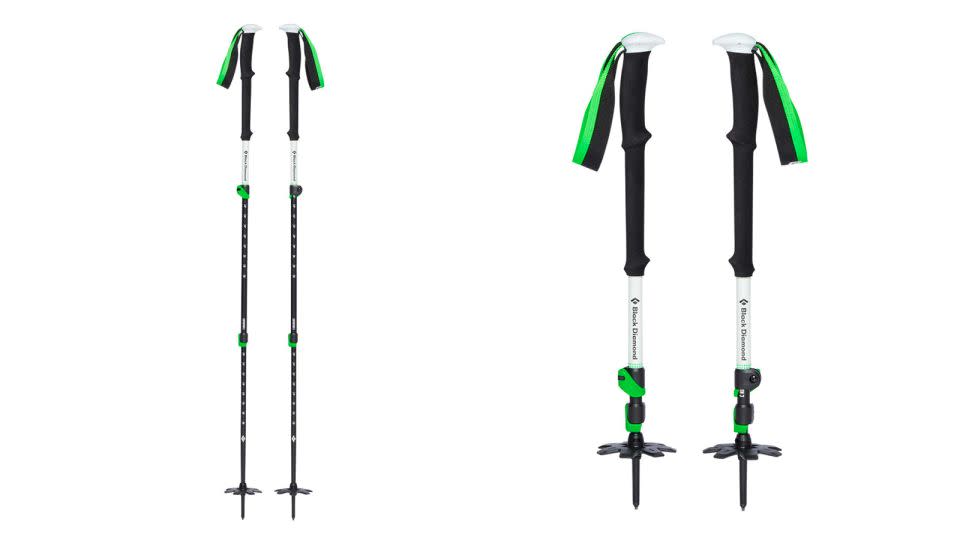
Ibarra likes these poles for their durability and adjustability. The collapsible three-section design, comfortable foam grip and adjustable strap help make them a go-to all year long.
$135 at Black Diamond
$140 at REI
Atlas All-Mountain 3-Piece Poles
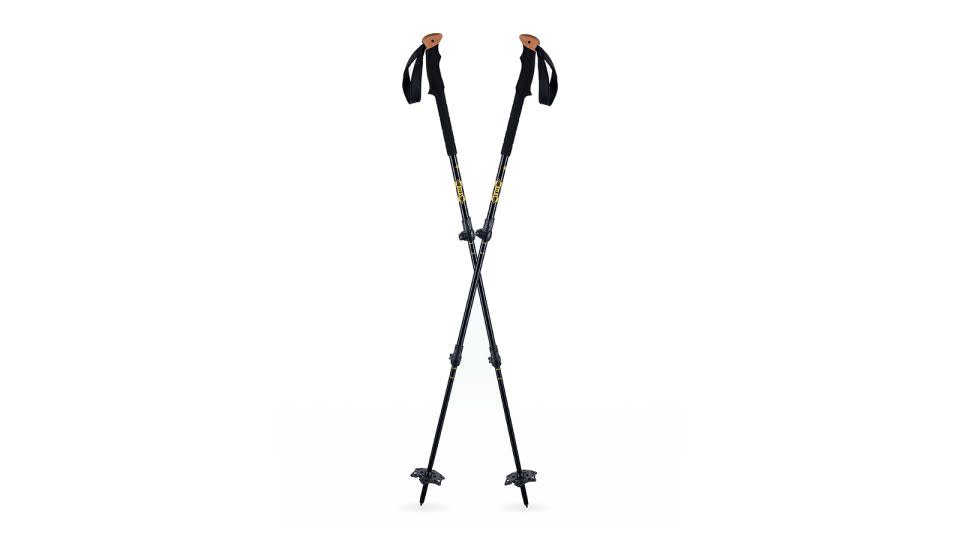
Sargent recommends these lightweight poles that feature snow baskets and an adjustable locking mechanism for easy packability and on-the-fly adjustments.
Gaiters, removable water-resistant or waterproof guards worn over your boots and lower legs to help protect your ankles and legs from getting cold or wet, are the most critical snowshoeing accessory, according to Hering. She designed a neoprene-insulated and fleece-lined pair for snowshoe running with the United States Snowshoe Association, which are available on Amazon and also recommended by Gray.
USSSA Snowshoe Neoprene-Insulated and Fleece-Lined Weatherproof Gaiters
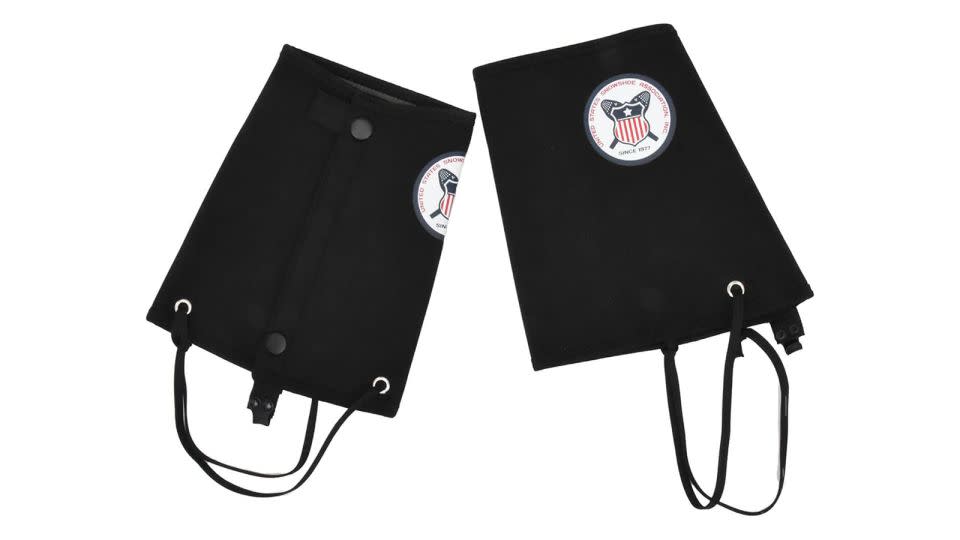
With a neoprene outer layer and fleece liner, these gaiters, designed by Hering, are made to keep your ankles and feet nice and warm — and snow-free. Available in small/medium and large sizes to fit women’s size 5.5 to men’s size 12 shoes, they’re easy to strap on and take off, thanks to snaps, Velcro and a front lace.
Outdoor Research Crocodile Gore-Tex Gaiters
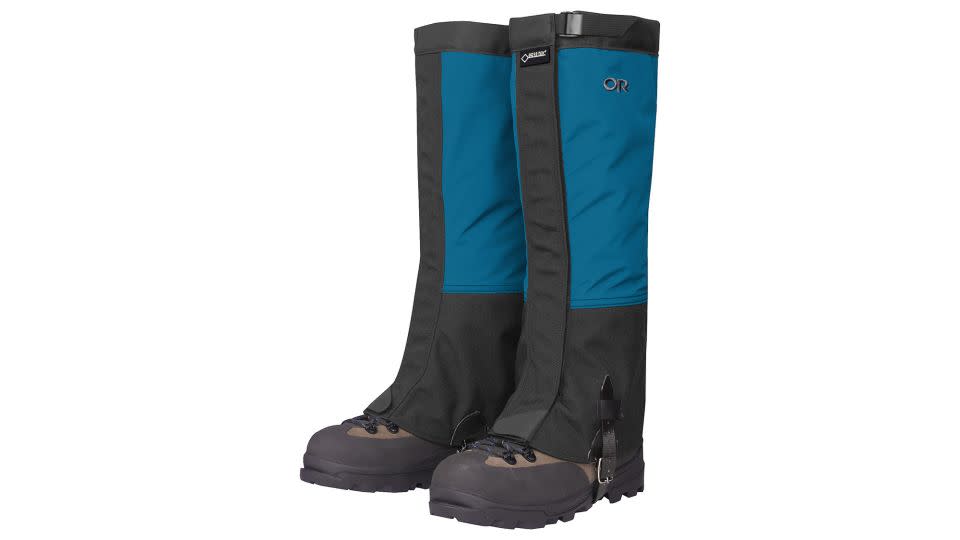
Ibarra recommends these gaiters for longer trips and peak ascents. Available in five colors and from sizes small to XXL, they’re compatible with hiking, mountaineering and double-shell plastic boots, using boot lace hooks and an instep strap.
$89 at Outdoor Research
$89 at REI
Outdoor Research Rocky Mountain Low Gaiters
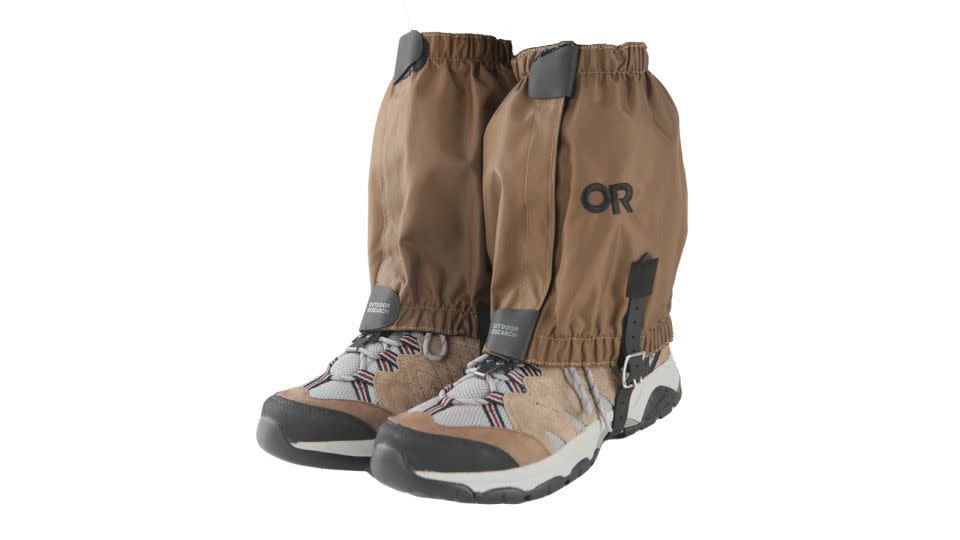
For shorter trips or on-trail use, Ibarra opts for these rugged, low nylon gaiters that protect against moisture and obstacles. With elastic on the bottom and a buckle at the top, they boast a snug and secure fit.
$39 at Outdoor Research
$39 at Amazon
$39 at REI
Clothing and other accessories
Dressing in layers is extremely important when snowshoeing, and Randall advises that the first layer against your skin — or base layer — should ideally be made of moisture-wicking material. “Even at low speeds, there is a chance you will work up a sweat, and you want your clothing to be able to accommodate the changes in temperature,” says Randall.
After the base layer, she adds a mid-layer top for insulation. “If it’s a little cooler out, I might go with a heavier fleece layer,” says Randall. “But if it’s milder, I might use the fleece as my top layer or put on a light shell.”
For bottoms, she opts for thicker, form-fitting, fleece-lined tights or thin pants over a base layer.
“The mistake some newer folks will make can be dressing too heavy to start and risking overheating,” says Randall. “I like to bring a backpack with an extra puffy jacket that I can always throw on later if I need more warmth. The key is to start a little lighter than you think and then let your activity build up the heat for you.”
Smartwool Women’s Intraknit Thermal Merino Base Layer Bottom
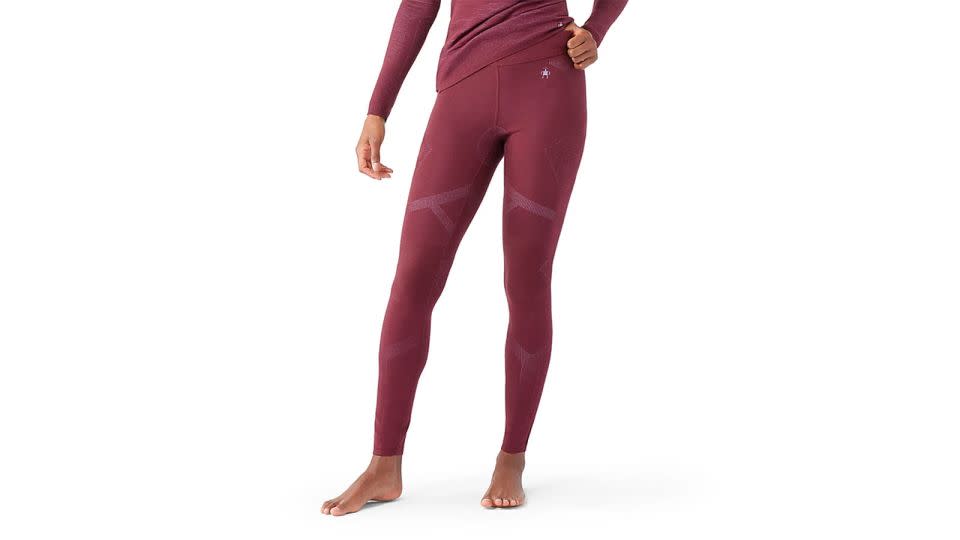
Designed for temperatures ranging from 50 degrees to well below zero, these highly reviewed bottoms are both insulated and ventilated, mixing merino wool with polyester. Quick drying and with a slim fit, they feature a mid-rise waist, come in five colors and range in size from XS to XL.
Patagonia Men’s Nano Puff Hoodie
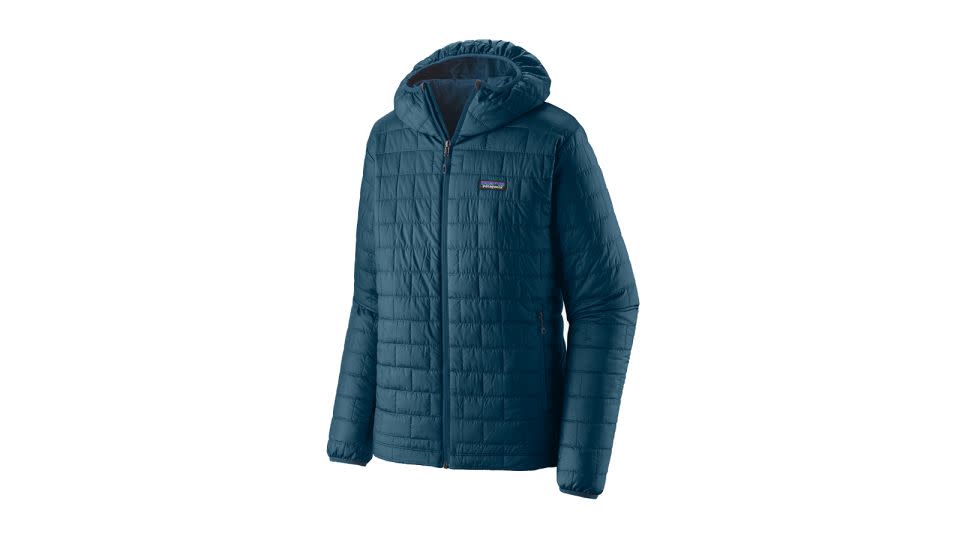
Between winter temperature swings and your own exertion levels, dressing in layers is a must when snowshoeing. This warm, windproof, water-resistant mid-layer comes with a hood, a drawcord-adjustable hem and a quilted pattern. And if you decide to take it off? It packs down easily to stash in your backpack.
The North Face Men’s Freedom Insulated Pant
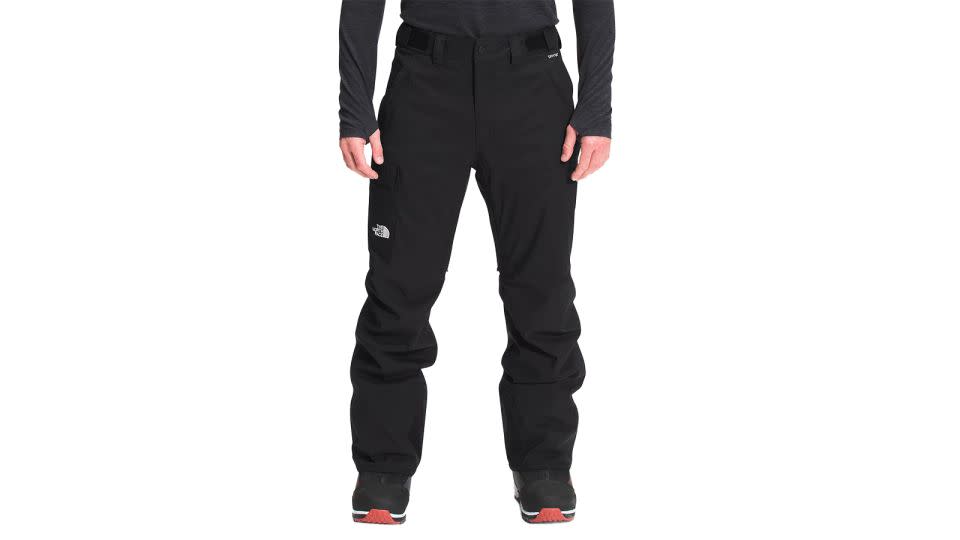
Sargent gives this insulated pant high marks for its waterproof, breathable performance, durability and all-conditions style. Choose from a range of colors and short, regular or long lengths.
$154 at The North Face
From $85 at Amazon
The North Face Women’s Summit Series Chamlang Futurelight Jacket
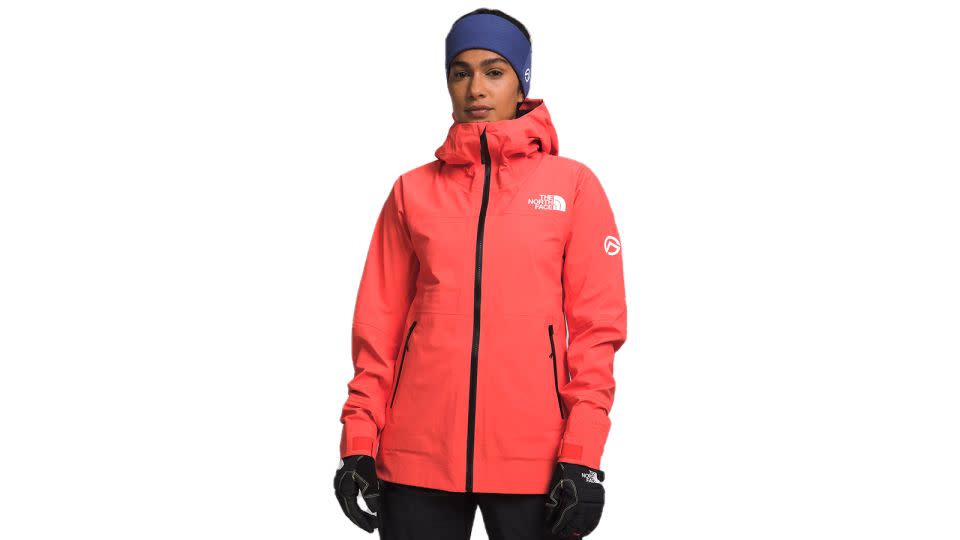
This versatile jacket is a “mountaineer’s best friend,” according to Sargent. Harness-compatible hand pockets, underarm vents for breathability and full waterproof coverage make it a winter must-have.
$450 at The North Face
$450 at REI
Note: The prices above reflect the retailers' listed price at the time of publication.
For more CNN news and newsletters create an account at CNN.com

